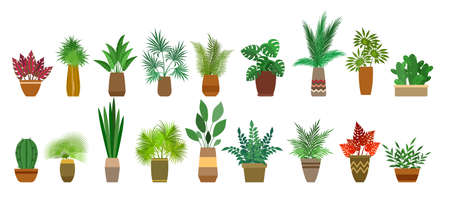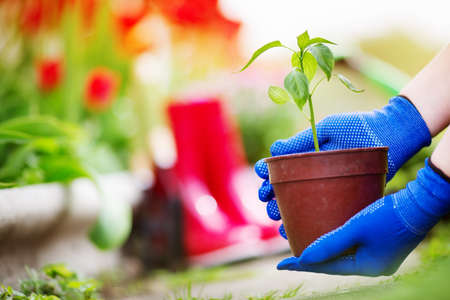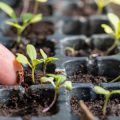1. Introduction to Soil Basics
If you’re new to gardening, one of the first things you’ll hear about is soil—but what exactly is it, and why does it matter so much? Simply put, soil is the foundation of any garden. It’s more than just dirt; it’s a living, breathing ecosystem made up of minerals, organic matter, air, and water. The type of soil you have can make or break your gardening success.
Why Soil Matters in Gardening
Soil plays a huge role in how well plants grow. It provides nutrients, holds water for roots to absorb, and allows air to reach plant roots. Different plants thrive in different types of soil, so understanding what kind you have helps you choose the right plants—or adjust the soil to better suit them.
The Four Main Soil Types
There are four basic types of soil that most gardeners will encounter. Each has its own texture, drainage ability, and nutrient-holding capacity. Here’s a simple breakdown:
| Soil Type | Texture | Drainage | Best For |
|---|---|---|---|
| Sandy Soil | Gritty and loose | Drains quickly | Root vegetables like carrots and potatoes |
| Clay Soil | Sticky when wet, hard when dry | Poor drainage | Moisture-loving plants like iris and aster |
| Silty Soil | Smooth and soft | Holds moisture well | Most vegetables and flowers |
| Loamy Soil | Balanced mix of sand, silt, and clay | Good drainage and moisture retention | Almost all garden plants |
How Soil Affects Plant Health and Growth
The type of soil you have affects how well your plants get water and nutrients. Sandy soil dries out fast, which can stress thirsty plants. Clay soil holds too much water, which can drown roots. Loamy soil is often considered ideal because it offers a good balance of moisture and air—key for healthy root development.
A Quick Tip for Beginners:
You can do a simple jar test at home to find out your soil type. Just fill a clear jar with soil and water, shake it up, let it settle overnight, and observe the layers that form—it’s an easy way to see what youre working with!
2. Common Soil Types in the U.S.
When youre just starting out with gardening, one of the most important things to learn is what kind of soil youre working with. Different regions across the United States have different types of soil, each with its own texture, drainage, and nutrient profile. Understanding your local soil type can help you choose the right plants and improve your gardens success. Heres a closer look at the six main soil types found throughout the U.S.—sandy, clay, silt, peat, chalk, and loam—and where they’re commonly found.
Sandy Soil
Sandy soil feels gritty and drains quickly. Its common in coastal areas like Florida and parts of the Southwest. While it warms up fast in spring, it doesnt hold nutrients well, so regular fertilizing may be needed.
Best For:
- Root vegetables (like carrots and potatoes)
- Herbs (such as rosemary and thyme)
Clay Soil
This heavy soil holds water well but can become compacted easily. Youll find clay-rich soils in states like Georgia, Alabama, and parts of the Midwest. It’s slow to drain and warms up slowly in spring.
Best For:
- Perennials (such as daylilies and asters)
- Vegetables that like moisture (like broccoli and cabbage)
Silt Soil
Silt has a soft, powdery texture and retains moisture better than sandy soil without being as dense as clay. Its often found near rivers or floodplains—think Mississippi Valley or parts of Californias Central Valley.
Best For:
- Lettuce
- Basil
- Corn
Peat Soil
This dark, spongy soil is high in organic matter and moisture retention. Peat soils are more common in cool, damp climates like parts of the Pacific Northwest or upper Midwest.
Best For:
- Berries (especially blueberries)
- Certain root crops (like onions)
Chalky Soil
You’ll find chalky or alkaline soils in areas with limestone bedrock, such as parts of Texas or Nevada. This type of soil drains well but can lead to nutrient deficiencies if not amended properly.
Best For:
- Lilacs
- Clematis
- Cabbage family vegetables
Loamy Soil
The gold standard for gardeners! Loam is a balanced mix of sand, silt, and clay. Its rich in nutrients, holds moisture well, but also drains efficiently. You’ll find loamy soils in parts of the Midwest and Northeast.
Best For:
- Tons of vegetables (tomatoes, peppers, squash)
- A wide variety of flowers and shrubs
Soil Type Comparison Table
| Soil Type | Main Regions | Main Features | Crops That Thrive |
|---|---|---|---|
| Sandy | Southeast & Southwest coasts | Poor nutrient retention; fast drainage | Carrots, rosemary |
| Clay | Southeast & Midwest | Dense; holds water well; slow drainage | Asters, broccoli |
| Silt | Midsouth & river valleys | Smooth texture; retains moisture well | Lettuce, basil |
| Peat | Northern U.S., Pacific Northwest | Nutrient-rich; acidic; retains water easily | Berries, onions |
| Chalky | Drier western states (e.g., NV, TX) | Drier; alkaline; may need amendments | Lilacs, cabbage family veggies |
| Loam | Northeast & Midwest regions | Ideal balance of texture & nutrients | Shrubs, tomatoes, squash |

3. Characteristics and Drainage of Each Soil Type
Understanding the characteristics of different soil types is key to successful gardening. Each type has its own texture, ability to hold water, and level of aeration. These factors directly affect how plants grow, how often you need to water, and what kind of amendments your soil might need.
Soil Texture, Water Retention, and Aeration
Soil texture refers to the size of the particles in the soil—sand being the largest, clay the smallest, and silt somewhere in between. The mix of these particles determines how well the soil drains, holds nutrients, and supports root growth.
Main Soil Types Overview
| Soil Type | Texture | Water Retention | Aeration | Common Gardening Notes |
|---|---|---|---|---|
| Sandy Soil | Coarse and gritty | Poor – drains quickly | Excellent – very loose structure | Needs organic matter to improve water and nutrient holding; great for root crops like carrots |
| Clay Soil | Fine and sticky when wet | High – holds water too well | Poor – easily compacted | Needs compost or gypsum to improve drainage; good for moisture-loving plants like asters or daylilies |
| Silty Soil | Smooth and soft | Moderate to high – retains moisture well | Fair – can compact over time | Adds fertility; benefits from regular cultivation to maintain structure; ideal for leafy greens and herbs |
| Loamy Soil | Balanced mix of sand, silt, and clay | Good balance – retains moisture while draining well | Good – supports healthy root development | The ideal garden soil; supports a wide variety of plants including vegetables, fruits, and ornamentals |
| Peaty Soil | Spongy and dark-colored with high organic matter content | High – holds a lot of moisture | Poor to fair – may require aeration improvements | Tends to be acidic; good for acid-loving plants like blueberries or azaleas; may need lime to adjust pH for general gardening use |
| Chalky Soil (Alkaline) | Stony or powdery with visible white chalk pieces sometimes present | Poor – drains quickly due to larger particles or rocks | Good – typically well-aerated but low in nutrients due to fast drainage | Adds lime naturally; not suitable for acid-loving plants unless amended; best for flowering shrubs like lilacs or clematis that enjoy alkaline conditions |
How These Characteristics Affect Your Garden Routine
Irrigation Needs:
Sandy soils dry out quickly and often need more frequent watering. On the other hand, clay soils hold onto water longer but may lead to root rot if overwatered. Knowing your soil type helps you set up an efficient watering schedule.
Nutrient Management:
Sandy and chalky soils tend to be low in nutrients since water washes them away easily. Regular addition of compost or slow-release fertilizers helps maintain plant health.
Tilling & Aeration:
If youre working with clay or silty soils, occasional tilling can prevent compaction and help roots breathe. Loamy soil usually needs minimal disturbance unless youre mixing in new organic material.
Selecting Plants:
Certain plants thrive better in specific soil types. For example, succulents prefer sandy soil for its drainage properties, while irises do well in heavier clay soils that retain more moisture.
The more you understand your soils characteristics, the easier it becomes to choose the right plants and care routines that will thrive in your garden space.
4. How to Identify Your Garden Soil
Before you plant anything in your garden, its important to know what kind of soil youre working with. Different soil types affect how water drains, how nutrients are held, and how plants grow. Here are some simple ways beginners can figure out their soil type right at home—no fancy tools needed!
Visual Check
Start by taking a close look at your soil. Heres what to look for:
| Soil Type | Appearance |
|---|---|
| Sandy Soil | Light-colored, feels gritty, and falls apart easily when dry |
| Clay Soil | Dark, sticky when wet, hard and clumpy when dry |
| Silty Soil | Smooth texture, holds moisture well, may feel soapy or slippery |
| Loamy Soil | Rich dark color, crumbly texture, holds shape but breaks apart easily |
Touch Test (Feel Method)
This is a hands-on method to test the texture of your soil:
Step-by-Step Instructions:
- Scoop up a small handful of moist soil (not too wet).
- Rub it between your fingers and try to roll it into a ball.
- Then try to form a ribbon by pressing it between your thumb and forefinger.
What It Tells You:
| If the soil… | Your soil type might be… |
|---|---|
| Won’t hold its shape and feels gritty | Sandy |
| Forms a sticky ball and long ribbon before breaking | Clay |
| Feels smooth and forms a short ribbon or ball easily | Silt |
| Feels slightly gritty and slightly sticky, forms a crumbly ball | Loam (ideal garden soil) |
DIY Jar Test (Sedimentation Test)
You’ll Need:
- A clear glass jar with a lid (like a mason jar)
- Water
- A tablespoon of dish soap (optional but helps separate particles)
- Your garden soil sample (about 1/3 of the jar)
Steps:
- Add the soil sample to the jar.
- Fill the rest of the jar with water and add dish soap if using.
- Screw on the lid and shake well for about a minute.
- Set the jar down and let it sit undisturbed for at least 24 hours.
Reading the Layers:
The soil will settle into layers:
| Layer (bottom to top) | Description |
|---|---|
| Sand | Settles first within minutes; largest particles at the bottom |
| Silt | Takes several hours to settle; middle layer with fine particles |
| Clay | Takes up to a day or more; top layer, very fine particles that stay suspended longest |
The proportions of each layer help determine your soil type. If all three layers are fairly even, congratulations—you likely have loam!
Tip:
You can mark the layers with a marker on the side of the jar to measure each section more accurately after settling.
Identifying your soil is an important first step toward creating a thriving garden. Once you know what youre working with, you can make better decisions about watering, fertilizing, and choosing plants that will flourish in your unique soil conditions.
5. Improving and Amending Soil for Better Plant Health
Once you understand your soil type, the next step is making it better for your plants. Not all soil is perfect, but the good news is that almost any soil can be improved with the right amendments. Here are some simple, practical ways to boost poor soil using compost, mulch, and soil conditioners.
Compost: Nature’s Best Soil Booster
Compost is decomposed organic matter like kitchen scraps, leaves, and grass clippings. It helps improve soil texture, adds nutrients, and supports healthy microbes that benefit plant roots.
How to Use Compost:
- For clay soil: Mix compost into the top 6–8 inches to improve drainage and reduce compaction.
- For sandy soil: Add compost to help retain moisture and nutrients.
- When planting: Blend compost into planting holes or garden beds for a nutrient boost.
Mulch: Protecting and Feeding Your Soil
Mulch is a layer of material placed on top of the soil. Organic mulches like wood chips, straw, or shredded leaves slowly break down and add organic matter to the soil.
Benefits of Mulching:
- Reduces water evaporation
- Suppresses weeds
- Regulates soil temperature
- Adds nutrients as it breaks down
Soil Conditioners: Fixing Specific Problems
Soil conditioners are products that change the structure or chemistry of your soil. They’re especially helpful if your soil has major issues like being too acidic or compacted.
| Soil Problem | Recommended Conditioner | How It Helps |
|---|---|---|
| Poor drainage (clay soil) | Gypsum | Breaks up compacted particles without affecting pH |
| Low nutrients | Organic compost or well-rotted manure | Adds essential nutrients and improves texture |
| Sandy soil lacking moisture retention | Coconut coir or peat moss | Helps hold moisture and slow nutrient loss |
| Acidic soil (low pH) | Lime (garden lime) | Raises pH to make nutrients more available |
A Few Extra Tips for Success
- Test your soil first: A simple home test kit or local extension service can tell you what your soil needs.
- Avoid overdoing it: Adding too much of any amendment can throw off balance—start small and adjust as needed.
- Be patient: Soil improvement takes time. Keep adding organic matter regularly for long-term benefits.
Your plants will thank you with stronger growth, brighter blooms, and better harvests when you take the time to care for your soil.
6. Choosing Plants That Match Your Soil Type
Once you understand your soil type, choosing the right plants becomes much easier. Each type of soil has its own strengths and challenges, and picking plants that naturally thrive in those conditions will save you time, effort, and frustration. Heres a simple guide to help you match flowers, vegetables, and landscaping plants to your soil type.
Sandy Soil
Sandy soil drains quickly and warms up fast in spring, but it doesn’t hold nutrients well. This means you’ll need to choose drought-tolerant plants or be ready to water and fertilize more often.
Recommended Plants:
| Category | Plants |
|---|---|
| Flowers | Lavender, Blanket Flower (Gaillardia), Yarrow |
| Vegetables | Carrots, Radishes, Potatoes |
| Landscaping | Russian Sage, Butterfly Bush, Juniper |
Clay Soil
Clay soil holds nutrients well but drains slowly and can become compacted. Its great for moisture-loving plants once its improved with organic matter.
Recommended Plants:
| Category | Plants |
|---|---|
| Flowers | Aster, Daylilies, Black-Eyed Susan |
| Vegetables | Cabbage, Broccoli, Brussels Sprouts |
| Landscaping | Dogwood Trees, Viburnum, Hydrangeas |
Silty Soil
Silty soil is fertile and retains moisture well, making it ideal for many types of plants. However, it can become compacted easily if overworked.
Recommended Plants:
| Category | Plants |
|---|---|
| Flowers | Iris, Peony, Japanese Anemone |
| Vegetables | Lettuce, Spinach, Zucchini |
| Landscaping | Ferns, Hostas, Willow Trees (in wetter areas) |
Loamy Soil
This is the ideal garden soil – a balanced mix of sand, silt, and clay. It drains well but also holds moisture and nutrients. Most plants thrive in loamy soil.
Recommended Plants:
| Category | Plants |
|---|---|
| Flowers | Daisies, Coneflowers (Echinacea), Coreopsis |
| Vegetables | Tomatoes, Peppers, Beans, Squash |
| Landscaping | Lilac Bushes, Maple Trees, Boxwoods |
Peaty Soil
This dark-colored soil retains a lot of moisture and is acidic. Its great for acid-loving plants but may require drainage improvements for some crops.
Recommended Plants:
| Category | Plants |
|---|---|
| Flowers | Azelias, Rhododendrons, Heathers |
| Vegetables | Cranberries, Kale (with pH adjustments) |
| Landscaping | Pine Trees, Camellias, Ferns (in moist areas) |
Chalky Soil (Alkaline)
This type of soil is free-draining but can be stony and high in lime content. Some plants struggle with the high pH level unless amended.
Recommended Plants:
| Category | Plants |
|---|---|
| Flowers | Lilies, Geraniums (Cranesbill), Sweet William (Dianthus) |
| Vegetables | Cabbage family (Cauliflower & Broccoli), Beets (with compost) |
| Landscaping | Cotoneaster, Honeysuckle Shrubs, Clematis (alkaline-tolerant varieties) |
The better you understand your garden’s soil type and what grows best in it naturally, the easier it will be to build a thriving garden. Choosing the right plants is one of the biggest keys to success!

